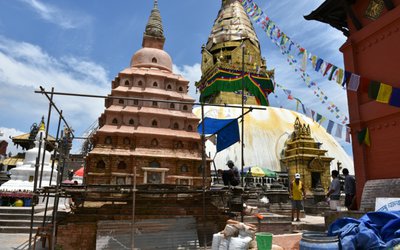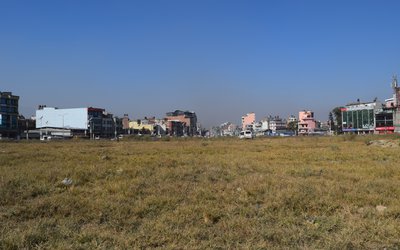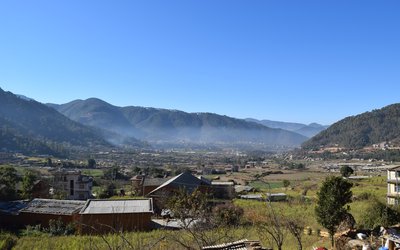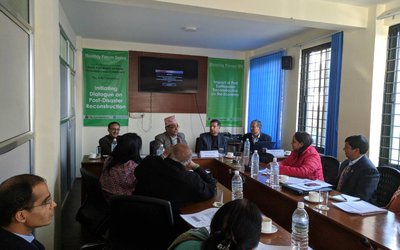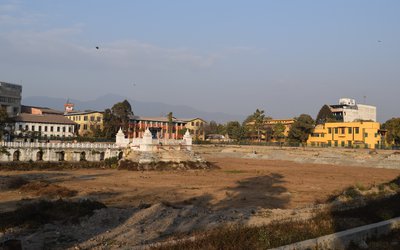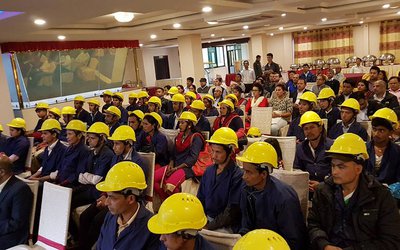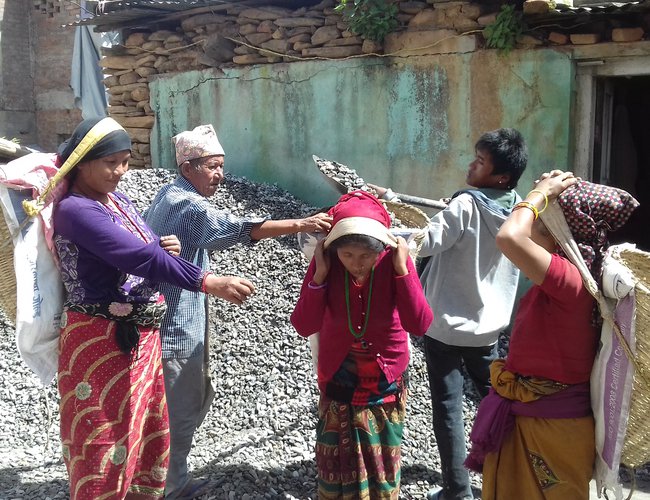
By Kiran Bhattarai in Chautara, Sindhupalchwok
Budan Tamang, 34, and Budari, 29, a couple, of
Duwachaur in Melamchi, Sindhupalchwok were spotted at the District
Administration Office at Chautara Sangachowkgadhi Municipality on the third
week of Nepali month Bhadra. The couple had visited the DAO to procure
passports with the plan to go to foreign land for a job.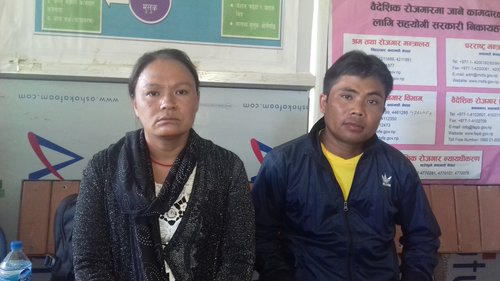
Budari is a former migrant worker, who worked as a domestic helper in Kuwait for the past two and a half years. However the couple is planning to toil in a foreign land again following a nasty turn their life took when the devastating quake struck. Their house was damaged completely in the disaster.
They have to pay the debt they had borrowed to build a new concrete house, and they have a plan that they would earn money and pay back the debt by toiling in a foreign land.
Back the time when Budari worked in Kuwait, she had shouldered the responsibility to support for her four children and a husband back home with the earning she would make there, as her husband was jobless then.
She could not make a good earning in the country however. Back home, her husband materialized their plan to build a concrete house with the money she had sent from Kuwait, and he also borrowed some money for the project. The house costs Rs 450,000. The newly built house could not last long however. Not more than one month since the house was built, it was destroyed in the quake, adding to the sufferings of the family.
That incident did not deter the determined couple however. They again tried to rise beyond the problems the quake caused to them, and erected a new concrete house by taking out a loan. They took out a loan of approximately Rs 800,000 to construct the new house.
This time around, both the couple is planning to venture into a foreign land for a job. "We both desire to work for the same company. It would be better and easier for both of us to work at the same company," said Budan.
Budari also desires to work for a company, instead of as a housemaid, a job she did previously while in Kuwait.
The couple has received the first tranche of Rs 50,000 the government had announced to the quake victims to build a new house. The couple has a plan to keep their 13-year-old son and seven-year-old daughter in a school hostel before they go to a foreign land for a job.
Disappearance and Trafficking
As numbers of quake survivors leaving for foreign employment increases, the disappearance of people especially women and children from Sindhupalchwok district is reportedly on the rise over the months since the 7.8 magnitude earthquake of April 25, 2015. The quake killed nearly 9,000 people, and injured about 22,000 others. The disappeared are suspected to have been trafficked.
According to government estimate, 8,856 were killed, and 22,309 others injured in the disaster, with Sindhupalchwok mostly affected out of the total 14 quake hit districts. A total of 3,532 died from the district alone, and 1,573 were injured, while 63,885 private houses were destroyed completely and 2,751 partially.
The intensity of the complaints is negligible however. The number of the complaints against human trafficking is put at two each in the fiscal years 2071\072 and 2072\073. Only one complaint was lodged in the FY 2073\074.
The police blame the negligible number of the complaints on the provision that a complaint will be filed from the same district where an incident of human trafficking occurs or the arrest is made. “The number of the complaints against human trafficking is negligible due to the provision,” said Superintendent of Police Mohan Pokharel.
“So we cannot say anything whether those disappeared after the quake are all trafficked or not. We are conducting investigations,” he said.
Some of those disappeared might be working in foreign countries, he said, adding that while some of disappeared children have left home post-quake and are working in manual jobs in Kathmandu.
The district is ahead of cases of human trafficking, according to available data. Harikala Bhatta, representative of Shakti Samuha Nepal working in the field of women trafficking said human trafficking is on the rise in the district. There are incidents of women being lured and trafficked to India and the Gulf, she said, adding that in some cases, women victims of the quake are made unconscious through various means before trafficking them into India. The Samuha has established a rehabilitation centre for trafficked people where 12 trafficked persons are taking shelter at present.
According to the police, a total of 181 cases of human trafficking occurred in the FY 2071\072, 212 in the FY 2072\073, and 227 in the FY 2073\074 in the district.
Of the total 70 disappeared from the district in the FY 2071\072 following the quake (35 women, 22 girl children, and 13 boy children), the status of only 21 has been found so far, the police said.
Of a total of 75 disappeared from the district in the FY 2072\073 (45 women, 23 girl children, and seven boy children), the whereabouts of only 21 have been traced so far.
Likewise, the total 91 were disappeared in the FY 2073\074 (55 women, 21 girl children, and 15 boy children).
A total of 710 government office buildings have been damaged completely in the quake, while 37 partially. According to 2068 B.S. Census, the populace of the district is 287,798 from 60,042 households. The figure constitutes 138,351 men, and 149,447 women.
Lack of manpower for reconstructions
The closure of the Tatopani point bordering northern neighbor China following damage by the quake has taken away jobs of many people of the district, as they heavily depend on the border point for their livelihood through various means like trade.
In this setback, most of the locals especially youths have opted for foreign employments for their livelihood, while others have gone to major cities like Kathmandu in search of a job. Some others are engaged in business at Rasuwa border point.
As a result of this outflow of the locals in search of job opportunities, the district lacks manpower for post-quake reconstructions underway at present. Although the villages are making do with whatever the populace is left in the villages for the reconstructions, city area is struggling to find human resources. In city areas, a huge workforce engaging in the reconstructions is outside of the district, said a construction worker.
"I am engaged in the reconstructions for the past one and a half months," said Dipendra BC from Panchapure Municipality in Surkhet. He earns Rs 800 a day (excluding food), he said. "I enjoy work back home, rather than go to foreign countries for a job. I will be with my family in need, and during festivals that is enough for me," he said.
The locals have complained however that their employment as a construction worker has been at risk as those construction workers outside of the district are taking over. Moreover they are ready to compromise on as low as wages.
"Those construction workers outside of the district are easily available to work for only Rs 500 or Rs 600 each a day far less than the wages the locals take for the same job, and for the same amount of time. This has risked our jobs," complained a local construction worker Dinesh Ghale.
Not only in construction work, people outside of the district, are engaging in other jobs like road construction. President of the Sindhupalchwok Construction Entrepreneurs' Association Nildhwaj Thapa said that workers outside the district are a priority as they are skilled and ready to work for as low as wages. "Unskilled workers from the district are reluctant to work for less than Rs 1,000 each a day. Skilled worker outside of the district are ready to work for less than that amount however," he said.
Despite the inflow of hundreds of construction workers into the district for the post quake reconstructions, the construction entrepreneurs have complained that they still lack construction workers.
Earning made in foreign land contributes to building house back home
However, migration is also contributing to accelerate the building house back better. Devi Kumari Shrestha of Chautara Sangachowkgadhi Municipality took a great financial help from her son working in Dubai at present in building a new concrete house after her house was damaged in the quake.Her son Umesh sent approximately Rs 1.2 million to construct the house. Earlier Umesh also worked in Malaysia for three years.
Rama Shrestha in the locality also built a new house recently with the money sent by her son, who is working in Malaysia at present.
But other villagers in the locality are not lucky enough like Devi Kumari and Rama, who had erected their new houses on their own after their houses damaged in the quake.
"I received Rs 50,000 the government has provided in housing grant. The grant was spent on repairing the damaged house. Now, I do not have money enough to erect a new house," said Uddhav Bahadur Karki.
Likewise, another local resident Lekh Bahadur Khatri
built a new house at the cost of Rs 500,000. He received Rs 100,000 as part of
a housing grant, and the rest money he had borrowed. 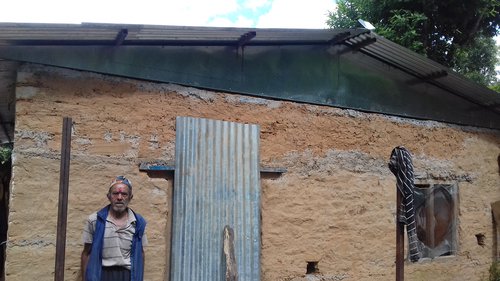
So far the National Reconstruction Authority (NRA) has reached an agreement with the total 635,296 of 765,618 households, whose houses have been damaged in the quake, to provide a maximum of Rs 300,000 to each household in housing grant. And of the grant, 65,528 households received the first tranche of Rs 50,000, while 65,879 got the second tranche and 3,927 the third tranche.
According to the NRA, construction of 121,754 houses is underway as part of the reconstructions.
In Sindhupalchwok, an agreement has been reached with 75,304 households for the housing grant, while 75,192 households received the first tranche of Rs 50,000, 11,070 the second tranche and 568 the third tranche, according to the NRA.
Quake survivors crying for housing grant to build new house
Suntali Maya Tamang, 60, of Chautara Sangachowkgadhi Municipality was found recently engaging in a construction work in the locality.
Tamang, whose house was destroyed in the quake, has yet to build a new house for herself however for want of enough money.
"I have not received any grant provided by the government for the quake victims," she complained.
Similar is the story of another local Rupdas Tamang, 65, who has yet to build a new house after his house was damaged in the disaster.
"I received the first tranche of Rs 50,000 provided by the government in housing grant, which has been deposited into my wife's bank account," he said. As the process of distribution of grant involve so many complications and the amount allocated by the NRA is inadequate to reconstruct the house, young people are fleeing the country. “Had both of us are young, we would have left the village long back to make the money,” said Rupdas Tamang. “How can you make your home in Rs.50,000.00? asked Tamang.” There are no more young people in the village as some have migrated to urban cities and those who can afford the money migrated to India or Gulf.”
Generation of job opportunities back home
Expert in foreign employment Dr Ganesh Gurung said the number of people going for foreign employment has decreased after job opportunities in the post quake reconstructions have been created back home.
"There is an assumption that earning is high in a foreign land, which is not true in most cases. Many may make good money back home as well," he said.
According to the Department of Foreign Employment, a total of 512,087 people had received labor permit for foreign employment in the FY 2071\072, while 401,713 in the FY 2072\073, and 398,978 in the FY 2073\074. The figure outnumbered women migrant workers, and Sindhupalchwok tops the number going for foreign employment after Jhapa.
The number of women being taken to foreign countries through illegal channels is rampant in Sindhupalchwok as well, according to available data. With the rampant poverty, ineffective enforcement, lack of opportunity, people are fleeing home hoping to secure better employment. As there is rampant migration, there is a highly possibility to trap the people in the net of trafficking.
_________________________________________________
TAXI FOR EARTHQUAKE VICTIMS
Hasty Help
The decision to provide 1500 taxi cabs to the
families of earthquake victims has failed to prevent foreign migration as it
had aimed to do
By A CORRESPONDENT
Twenty five year old Ram Krishna Shrestha of
Salyanpur Tar of Dhading District was happy when his father’s name was randomly
selected on a lottery from 150,000 applicants. Shrestha, who was considering
foreign employment, found a respite.
However, his relief did not last long -- he found
the amount of money required to invest to purchase the car was huge. With the
limited income, Shrestha’s family was unable to invest 1.5 million rupees in a
car. Instead they decided to sell the number plate to an agent in a secret
settlement. Shrestha declined to disclose the amount but it is reported that he
might have sold it in the range of 400,000 to 600,000 rupees.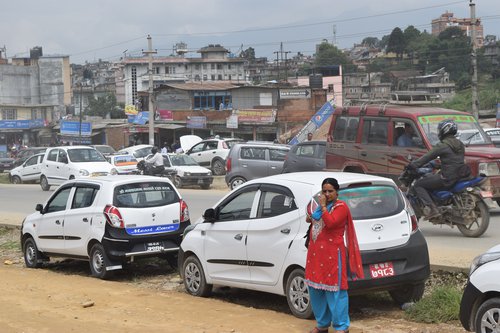
“As we are already in loan to reconstruct the house, who would pay the additional burden of loan?" asked said Shrestha, who is now waiting for his ticket from Dubai.
The story of 32 years old Gyalde Ghale of Haku village of Rasuwa district is similar. Although his name was also selected through the random lottery, Ghale was unable to invest the money required to purchase the car.
“I signed all the documents necessary to register the taxi and transferred it to the person who purchased it,” said Ghale.
Shrestha and Ghale are only two examples. Many others are in the same situation.
With an aim to create employment opportunities in the country for quake victims and prevent them from foreign migration, the government introduced the taxi scheme. However the scheme has fallen flat, as a large number of such victims, after acquiring the taxi permits, have been transferring the ownership of their cabs immediately after getting it registered with the government office.
Almost every second household in the earthquake affected zone has at least one family member working in a foreign country. Experts say that this has profound effects on reconstruction.
However, migration expert Ganesh Gurung has a different opinion. He argued migration to Gulf and other countries is also helping the reconstruction. “About 7.4 percent households reported that at least one family member migrated in the one year period before earthquake who did not return after earthquake. About 4.4 percent migrants, who did not return, did send the remittance to cope with the crisis after the earthquakes,” said Gurung, presenting a paper on the impact of earthquake on migration, in a program organized by SWATEE.
Showing the above scenario, the government is trying to justify its decision. However, the decision itself promoted internal migration. Thos who have the economic capability to invest in the taxi cabs will be compelled to migrate to Kathmandu and drive taxi.
Taxi Again
As a car costs almost 1.6 million rupees, it is impossible
for a majority of earthquake victims to make the investment in purchasing the
vehicle. According to Bagmati Transport Management Office BIMO, almost 700
earthquake victims, who recently acquired the taxi permits, have already
transferred the ownership of their vehicles.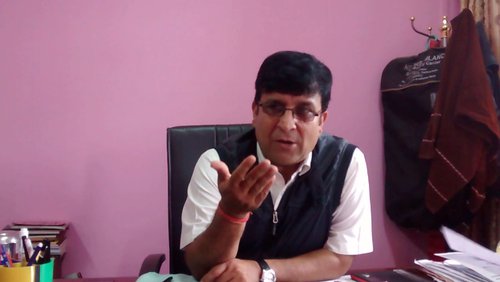
Due to their failure to withstand the financial burden of buying taxis, earthquake victims are searching for investors to purchase the taxi and transferring the ownership of the cab after taking some commission.
In an open market, new taxi permit acquirers are taking commission amounting to almost Rs 500,000.00-600,000.00 while transferring the vehicle’s ownership to the actual investor.
“Though we have the legal provision that one cannot buy or sell vehicle number plates and permits, there is no law that prohibits the acquirer of new taxis from transferring the vehicle’s ownership,” said Basanta Adhikari, head of Small and Big Vehicle Division at BTMO.
BTMO officials said a large number of quake survivors who had been granted new taxi permits were aged above 60 — the age-group for which banks and financial institutions are reluctant to issue loans.
Adhikari admitted that the scheme was launched without enough groundwork. While launching the scheme, the authorities failed to properly disseminate information to quake victims that the government was not giving away free taxis but only free number plates and route permits.
“This is a policy decision taken by the ministry. The department has just facilitated between government and earthquake victims," said Tok Raj Pandey, spokesperson for DoTM. “The aim is to prevent foreign migration of earthquake victims.”
According to the scheme, the DoTM sets the quota. The districts, Kavrepalanchowk, Nuwakot and Ramechhap, received 201, 125 and 165 respectively. Similarly, earthquake victims of Dolakha, Sindhuli and Sindhupalchowk received 214, 46 and 253 respectively.
Kathmandu, Lalitpur, Bhaktapur, Makawanpur, Dhading, Okhaldhunga, Rasuwa and Gorkha receive 496 taxi permits with earthquake victims of Dhading receiving the highest number of taxi permits (117).
Quake victims of Okhaldhunga and Rasuwa received the least taxi permits (30 each). The department had received a total of 25,000 applications for taxi permits from quake survivors of Sindhupalchowk district alone.
Prabesh Shrestha, a winner of taxi permit and a quake victim of Ramechhap district, holds the view that the government should have gifted quake victims a cow or a buffalo or different agricultural tools, which would help them to sustain their life in their own localities.
Although the government has its own rationale behind the move, the results did not justify their cause. If one looks at the recent migration report of these earthquake affected districts, what one can find is that the number of people leaving for foreign migration is growing. It was a haphazard decision and the results are also haphazard.
Taxi numbers were provided with an objective to prevent the foreign migration of earthquake victims. However, many victims are using the money to go to foreign countries after getting the money from the sale of taxi. The flawed cabinet decision resulted in more flaws.
Even the people from
Kavre, Sindhupalchowk, Makwanpur, Gorkha and Dhading, who had secured the taxi
permits, permanently migrated to Kathmandu.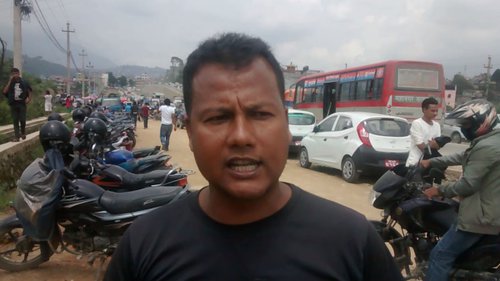
According to the information officer for the Ministry of Physical Infrastructure and Transport Information Office, Bishnu Prasad Sharma, Under Secretary at the Ministry, the government had taken the decision with a good intention to prevent foreign migration and help the earthquake victims secure their livelihood.
Due to the cabinet decision, there is a restriction for import of taxis in Kathmandu. Before the earthquake of 2015, there were 10,000 taxis in Kathmandu. After the earthquake, the government has already added additional 2500 more, taking the figure to 12,500.
This shows how flawed decision can bring more flaws as a result.
New Spotlight Investigation.pdf
This publication has been supported by The Asia Foundation. The contents of this publication reflect the views of the author(s), researcher(s), and contributing editor(s) and do not necessarily reflect the views of The Asia Foundation.

Kiran Bhattarai
Bhattarai is a Kathmandu based journalist. He has been writing migration issue. He can be reached at kiranbtrai@gmail.com
- Nepali Women Are More Vulnerable In UAE
- Jan 29, 2018
- EARTHQUAKE RECONSTRUCTION Loan Delayed, Loan Denied
- Jan 07, 2018

